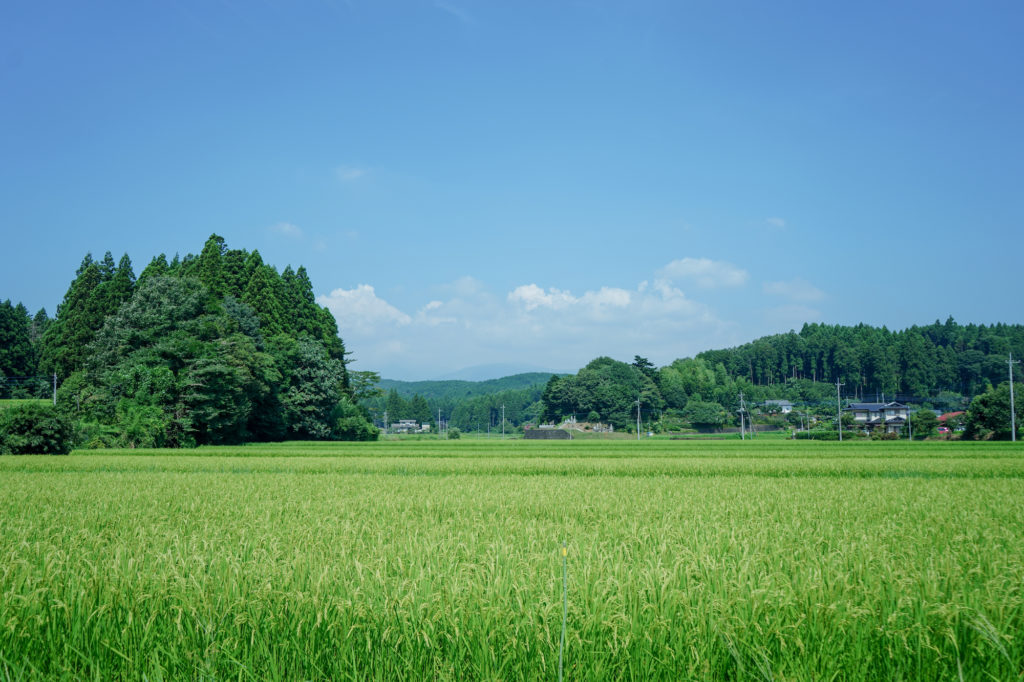Into the back of beyond
The Nikko Kitakaido is a branch road for joining the Oushuu Kaido from Nikko, and Basho spent a night in an inn in the post town of Tamanyu in Yaita City, midway along the road. While he composed no poems in Yaita, there are slabs etched with haiku placed in rice fields and by small shrines, that are so reminiscent of Basho.
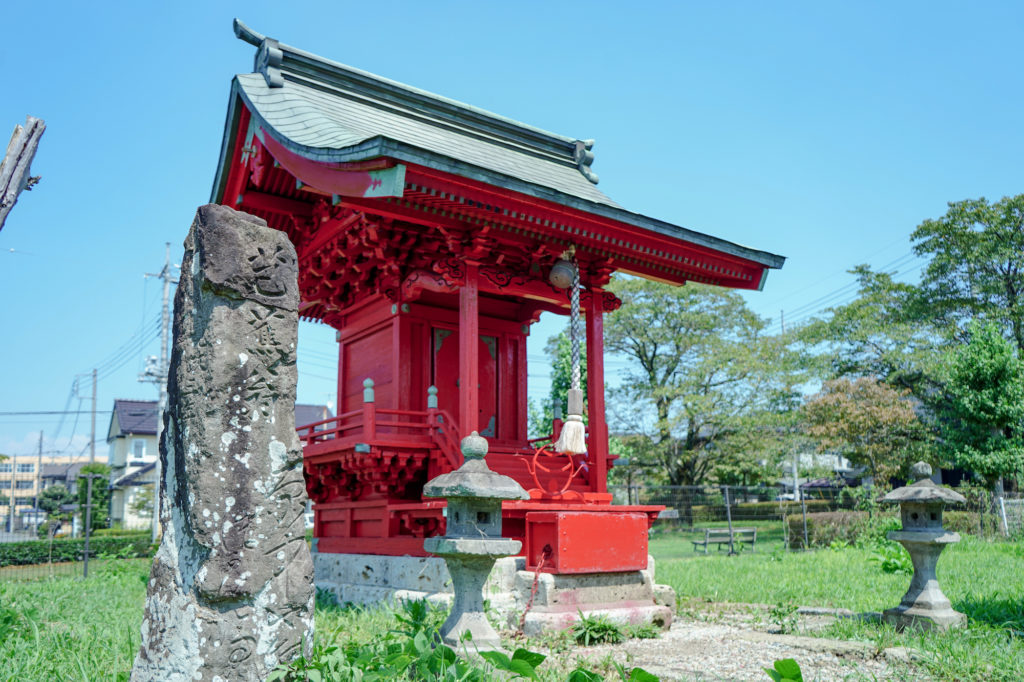
Despite knowing only too well that transport was much less convenient in the old days compared to today, we don’t have many chances to experience this in our everyday lives. However, spending a night in a small Inn in Yaita really excites the emotions of the traveler, giving rise to a nostalgia for the people of ancient times.
Can it really be past this cliff? At the bottom of a steep slope that seems to continue forever through a gorge, is Kotaki Kosen hot springs, which opened its doors in 1892. The thermal spring water which oozes from the ground surface and bare rock at around 15 degrees, is a copper tan color. Rich in iron and metasilicic acid, it is known for its beneficial effects on gastrointestinal pain and nerve pain, as well as for beautiful skin. It is just the thing for slowly warming up the body and recovering from fatigue. The inn is located in Happogahara, once frequented by charcoal makers and long-term hot spring visitors who presumably had to brave perilous mountains roads in order to soak in the thermal springs and heal their aches and pains. Mr.Masayuki Sato is the 4th generation proprietor, with his wife Sachiyo. The charming gentility of this happily married couple warms the body and soul of the traveler. The cuisine, replete with local, seasonal delights including Shiitake and shisomaki, is needless to say, simply exquisite.Throughout the 130 odd years since opening, they have never taken on any employees, with the family all mucking in to wash the towels and prepare the futons. The road, by the way, was dug with shovels by Masayuki and his father, which Masayuki then finally completed using machinery. Glancing at the road as the couple wave us on our way, the fatigue felt upon arrival has miraculously disappeared. I feel a sense of pride, and vow to return soon.
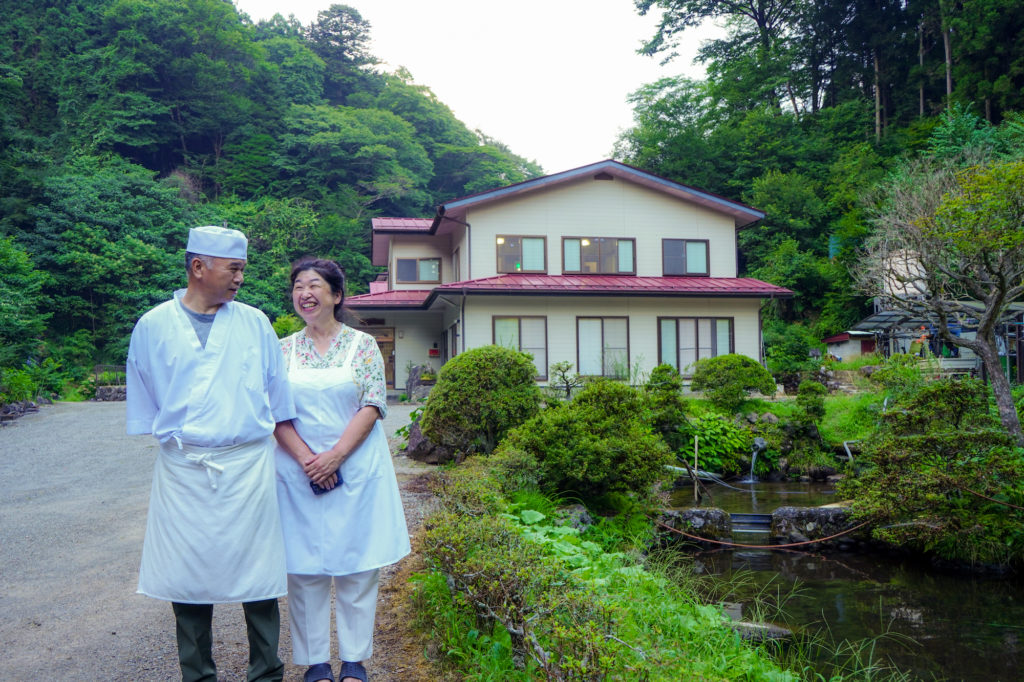
Bounty of the four seasons adorns the tranquil plateau.
Part of the Nikko National Park, Happogahara is the plateau that sweeps from Yaita all the way to Nasu Shiobara. Recently, it has become well-known for the phantasmal “Oshiraji No Taki” Waterfall which only appears after it rains. Looking out over the Kanto Plain far into the distance, the clear streams flowing from the plateau together with the fertile earth and temperature difference provide perfect conditions for rice cultivation. It is no surprise to learn that in 2019 Tochigi ranked 8th domestically for rice crop yield amount. In every direction, one is met with the bucolic late summer scenery of ripening ears of rice.

Despite being at the southernmost extent of the apple producing region, Yaita boasts the highest yield of apples in the whole of Tochigi Prefecture. Given the nature of the locality, which is unsusceptible to heavy snow and cold snaps, the fruits are allowed to mature on the branch before harvest, condensing their innate sweetness. We visited “Watanabe Apple Orchard” in search of these other-worldly apples that hardly ever make it as far as the shelves of a greengrocers.
“We don’t grow the apples ourselves; it is more like we are just helping them to grow”. So explains 2nd generation owner Sachifumi Suzuki. After learning how to cultivate apples in Iwate and Fukushima, he took on the apple orchard from his father, the first-generation owner, and gave it a full revamp from the soil upwards. Spurning chemical fertilizers, he uses a unique manure that includes rice bran amongst other ingredients. He ensures that the trees have the environment they need to thrive, including not cutting the grass at the foot of the apple trees and leaving it as it is so that ticks in the earth’s surface cannot find their way up into the trees. “Compared to other regions, the apple harvest in Yaita is late. We harvest some 20 days after full blossom, and during that time we keep a very close eye on their condition, and even speak to the apples. Apples are serious about bearing delicious fruit, for prosperity’s sake”. Sachifumi is zealous about breeding new cultivars for the purposes of research and in search of the ultimate flavor. While it is impossible to fathom the toil involved in carefully cultivating 600 apple trees of some 50 varieties, seeing someone happily devoted to his orchard at the base of a mountain inspires a sense of relief.
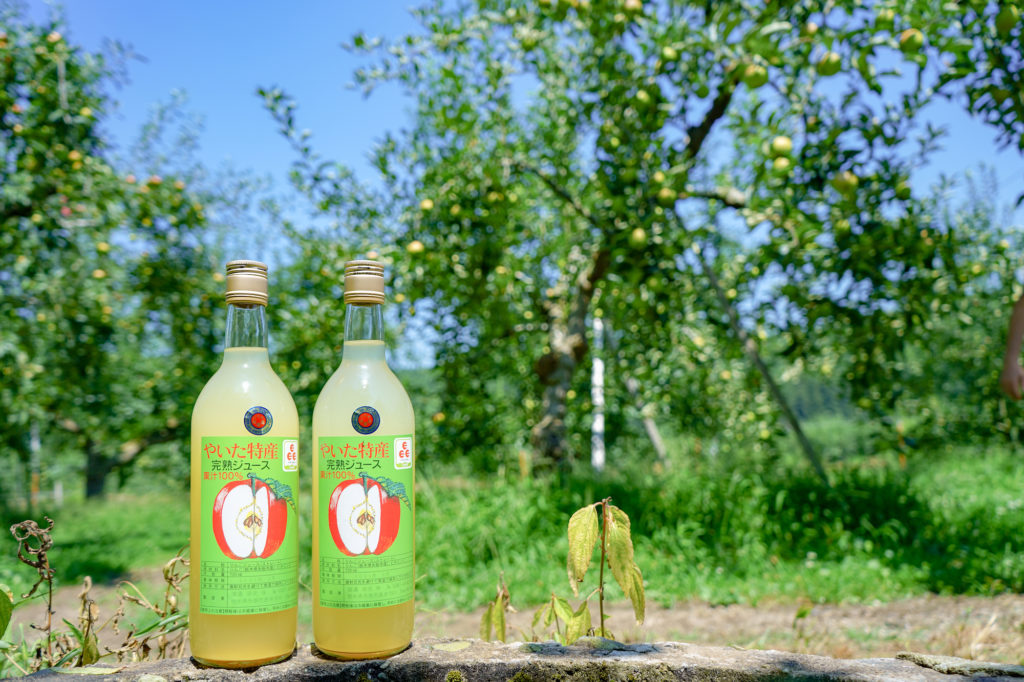
The younger generation proudly bearing the future of Yaita.
“58 Lohas Club” is a veritable “field of dreams” that makes full use of a former golf course. Owner Toshihisa Komori explains: “Ever since it was a golf course, we have operated it on the theme of “self-sufficiency for food and energy”. The agriculture that we started to provide jobs during the off-season for caddies and employees is an important strand of our activities”. The 100ha of solar panels that used to be a golf course provides electricity for the entire facilities, while the remaining land is used for agriculture, with the timber from forest thinning used for log-house construction and for heating water within the facilities. Drawing in some 5000 people and 1000 pets, the weekend market is currently the nucleus of the organization, and a community hub. The expansive dog run with 2ha of space is among the largest in Japan, and also doubles up as a shelter for people evacuating with pets during disasters, the first of its kind. His desire to “use Yaita’s resources to turn into a place open to the locals” led in 2020 to the concluding of a disaster resilience arrangement with Yaita City. “Golf courses are a repository of natural resources, and it is my hope that we can focus on the positive effects that they bring to environments and communities, and allow more golf courses to be reborn”. The initiatives of this golf-loving romantic merit close attention.
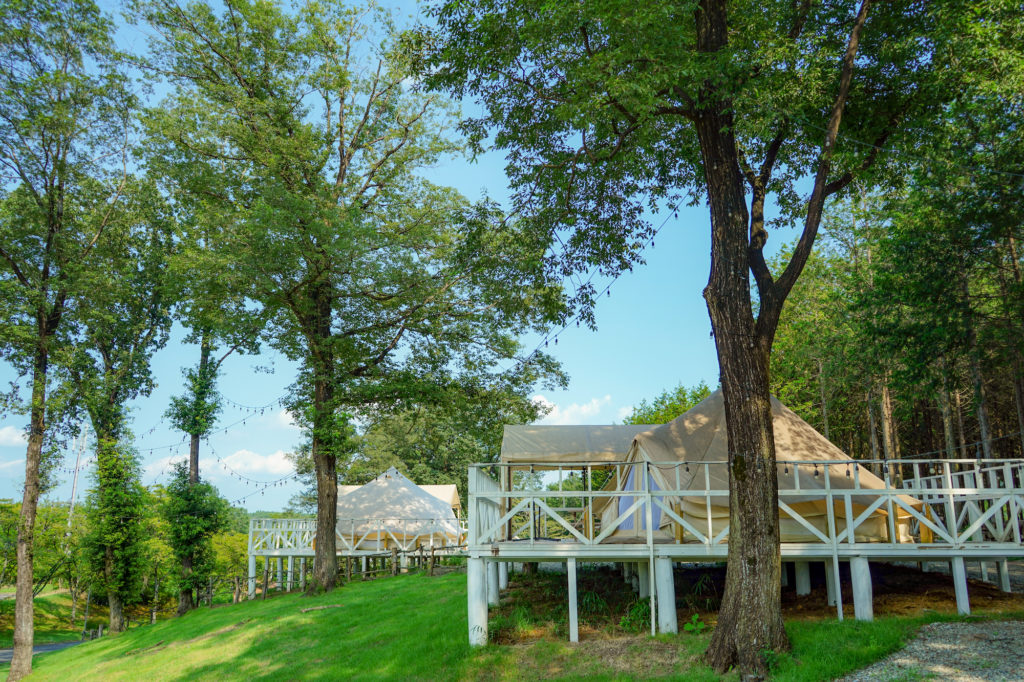
“This place is like my spiritual home. I want to devote the rest of my life to steadily creating things that can be passed on to the next generation”. These are the words of Yayoi Kato, an art director who divides her time between Yaita and Tokyo. Her forays up here began when her father purchased land and an old house in a settlement where the post town of Yamada was once located on the Aizu Middle Road. While at University studying art, she began visiting regularly with her fellow students, and opened the “WASHINKAN” guesthouse in 2018, followed by the adjoining book café in 2019. “People in Yaita are humble, warm, and will never let you down”. One cannot help but feel excited at all that Yaita has in store for those lucky enough to call it home.
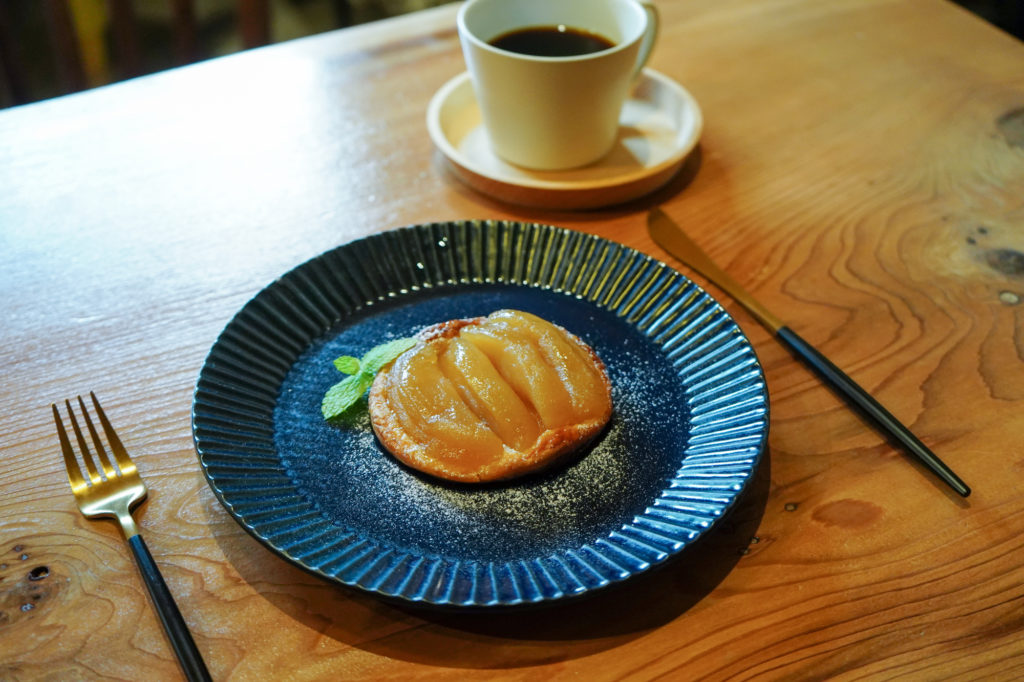
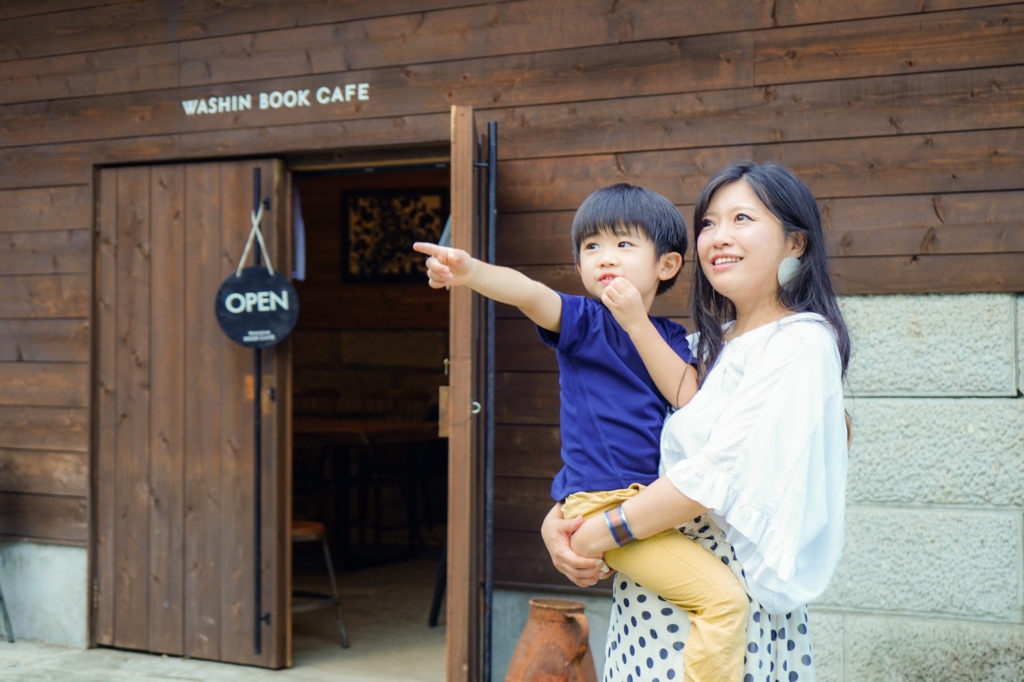
【Sign up Now!】
Tour de Nippon in Tochigi / Yaita
Taking place over the weekend of May 29-30, 2021
Enjoy a weekend bicycle trip over two days, taking in Nasushiobara, Yaita and then onto Kinugawa. Day 1 starts at Nasu Shiobara. We will then head for Yaita while taking in Nasunogahara. After spending a night enjoying the food and warm company of the locals, we will cycle along the abandoned Tobu railway line imagining the old steam locomotives that once operated along the route. Our final stop is Kinugawa Onsen Station, which is also the arrival and departure point of a currently operating steam locomotive “Taiju”. Meals along the way will feature seasonal delights from both the mountains and rivers.
For the detail, please check the annoucement >> Tour de Nippon in Tochigi / Yaita
